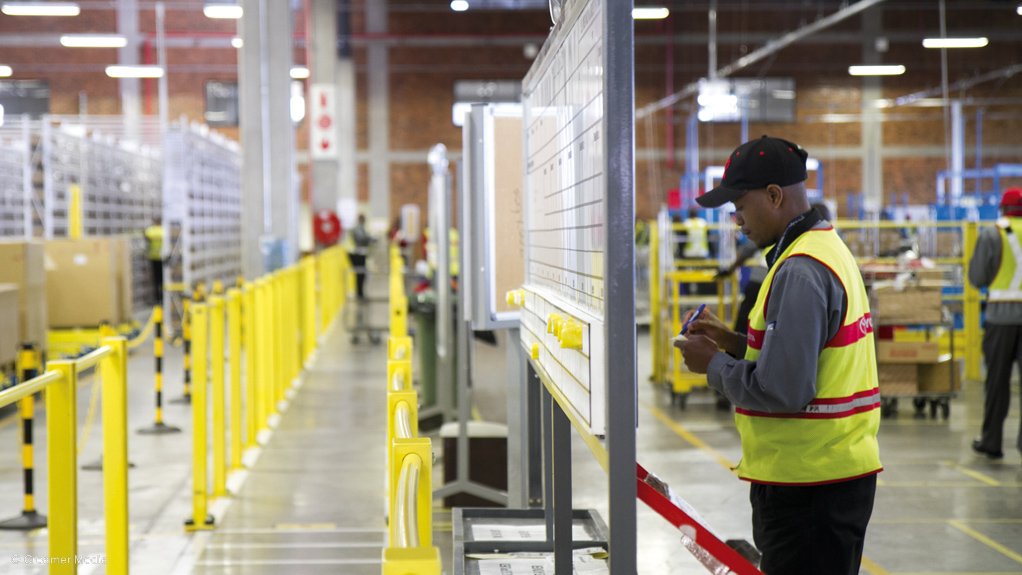With labelling and barcoding being critical elements of the packaging process,
companies are increasingly exploring innovative technology to unlock economies of scale and the potential of space, says beverage manufacturer and distributor ABI Bottling.
“The process of getting one’s product to market is a complex one, which involves a number of critical players and, as such, developing a robust and scalable model that meets business imperatives of efficiency, customer service excellence and optimisation requires collective buy-in and commitment across this value chain,” says ABI MD Velaphi Ratshefola.
He adds that it also requires a consistent search for systems enablers, which typically manifest through innovative technology.
Owing to this, Ratshefola comments that the company has implemented a more systems-directed approach earlier this year at its warehouse, in Midrand. He notes that such an approach to warehousing – particularly for fast-moving consumer goods (FMCG) businesses – can allow for accurate real-time reporting on various activities, therefore, increasing the workflow capacity of warehouses while reducing costs.
“The recent introduction of a new warehouse management system has moved our operations from relying on manual decision-making and paperwork to becoming systems-driven operations that are guided by continuous optimisation and synchronisation, without the need for paper,” Ratshefola points out.
He explains that the introduction of the system has resulted in all production lines, storage bins and trailers being barcoded, subsequently enabling ABI to scan stock inside the warehouse more easily without doing a wall-to-wall count.
“We’ve also been able to start cycle-counting specific products at specific times of the day. ABI’s pickers have additionally moved from paper-based picking to voice-picking, which is done electronically with load-building design also being improved. Mobile devices, including scanners and voice devices, are key components of the system on the shop floor.”
Ratshefola highlights that, despite the high number of system changes having been implemented, certain processes have been retained, which are recommended in most instances.
He notes that a critical determinant in unlocking the real opportunity of a company’s warehouse space is an understanding of what works well and how it can complement the new system being implemented. With regard to ABI, the binning system and driver interaction at check-in will continue as they did before, Ratshefola clarifies.
He reiterates that warehouse efficiency starts with leveraging labelling and barcoding, adding that a system’s ability to interpret and use barcodes can influence everything – from picking accuracy to visibility and traceability of stock, as well as how pallet building can be optimised.
“As such, that single label on a bulk product bin impacts on the entire warehouse-to-market value chain, to the point of enabling a warehouse manager to comfortably reduce safety stock requirements,” Ratshelofa explains.
Technological Choices
Ratshefola maintains that real-time information and reporting are key throughout this value chain, as experience has proved that the implementation of the correct technology can make all the difference in a warehouse.
He asserts that, while most companies do not often consider how the products consumed and used on a daily basis get to market, it is a critical consideration and an imperative for warehouse and logistics managers in South Africa.
As part of ABI’s research, he mentions that the company subsequently selected the best way of empowering people working in warehouses, which entailed designing an effective and efficient system to ensure productivity, and the delivery of the correct stock.
“We had to consider previous operational challenges to ascertain their causes, from which . . . we . . . derived solutions that we could implement as part of our design,” he comments.
Ratshefola emphasises that the employees also offered key insights to the research, owing to their direct operational involvement at warehouse level. They also shared some of the daily work challenges they had experienced. She adds that the research focused more on how the company could simplify processes, which enabled the employees to perform optimally.
“From ABI’s perspective, addressing the innovative imperative means to fundamentally speak of the infinite opportunities made available as a result of adopting technologies that unlock business potential.
“Our business imperative is to create a community of employees who are at the forefront of innovation and who take ownership of servicing a customer efficiently at all times,” he concludes.
Edited by: Zandile Mavuso
Creamer Media Senior Deputy Editor: Features
EMAIL THIS ARTICLE SAVE THIS ARTICLE
To subscribe email subscriptions@creamermedia.co.za or click here
To advertise email advertising@creamermedia.co.za or click here















